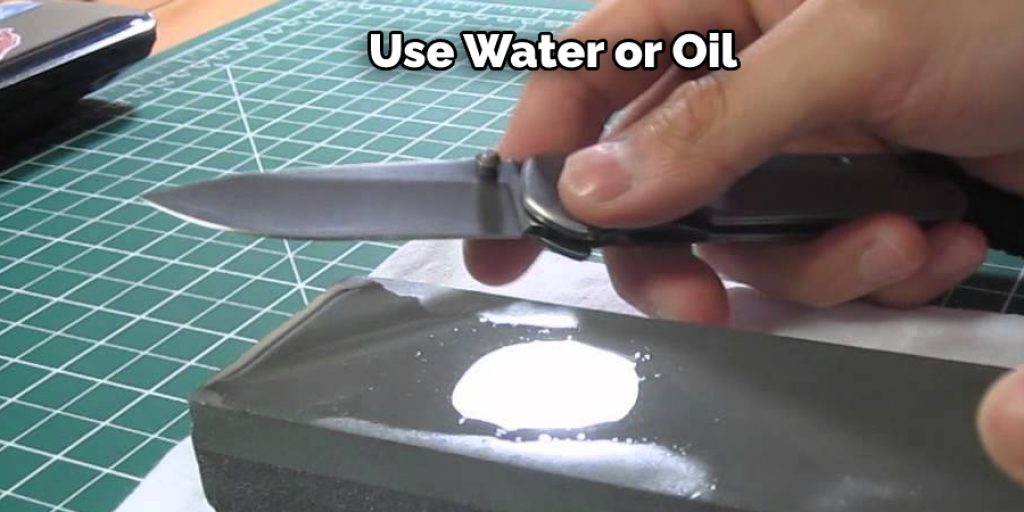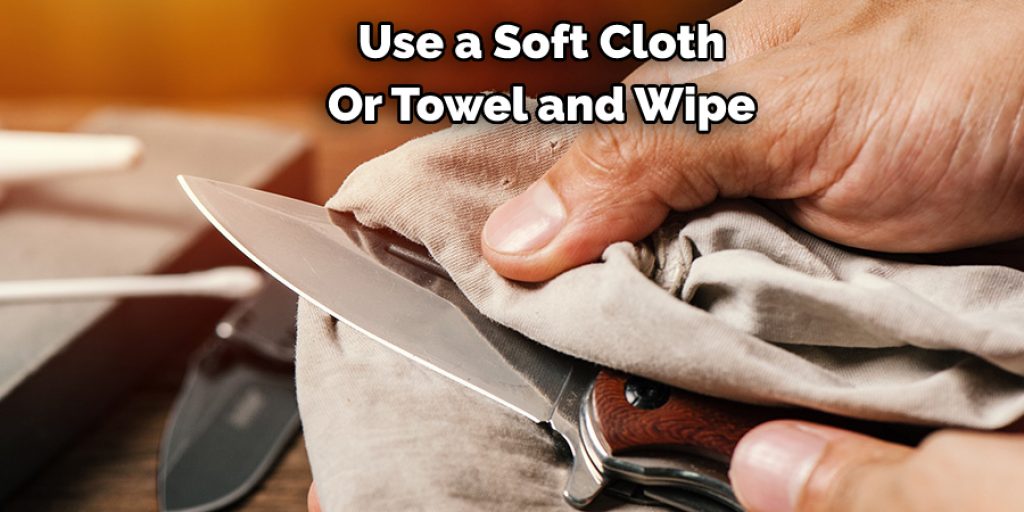How to Sharpen a Pocket Knife Razor Sharp
Are you looking for a way to sharpen your pocket knife, so it’s razor-sharp? A dull pocket knife is just a waste of space. In this blog post, we’ll walk you through the steps on how to sharpen a pocket knife razor sharp. We’ll walk you through the process step-by-step, and before you know it, your old pocket knife will be slicing through everything like butter again.

We’ll also cover some of the basics of knife sharpening, such as the types of blades and honing materials. So whether you’re a beginner or experienced knife sharpener, read on for tips and advice that will help you get the job done right.
What do You Need to Sharpen Your Knife?
Pocket knives are very easy to handle. However, a dull blade can make it a burden to use. First of all, You Will Need:
- A whetstone or sandpaper
- Water or oil
- A cloth or a paper towel
- A cutting board
- Gloves to protect your hands
If you don’t have oil or water at hand, You can use a little saliva as a lubricant. One essential thing is never to use a sharpening tool that has been used on a ceramic blade! It can destroy the steel.
Step by Step Process: How to Sharpen a Pocket Knife Razor Sharp
Step 1: Examine the Blade
Look at the knife blade. If it’s very dull, you’ll need to use a coarse-grade sharpening stone. A coarse sharpening stone is usually recommended for a blade that has been neglected and not properly sharpened in a long time. But, of course, this step isn’t necessary if your blade is already sharp.
Step 2: Find Your Angle
This is the most important step in sharpening a pocket knife. If you put too much pressure on the blade, you could damage your knife permanently. Instead, press down lightly and hold the blade at an angle of about 15 degrees. You can also use a pocket-knife sharpener like this one.
Hold the knife and sharpener in your hands and slowly move the blade against the sharpening steel from one end to another. Be very careful not to hurt yourself here! Remember, you’re just trying to remove a thin layer of metal from your blade’s edge. It’s not necessary to push down hard. Repeat this step several times until you create a new edge on your blade.
Step 3: Polish It Off
After sharpening, use a smooth cloth or paper towel to wipe the blade and remove any excess metal particles from the knife. Then, wipe it three or four more times, going with the grain of the blade.

The important thing to remember is not to remove too much metal when sharpening your pocket knife! If you keep removing it each time, the knife will become weaker and wear out faster. This means that if your blade is already very dull, you’ll need to start with a coarser sharpening stone than usual before moving to the finer one.
Step 4: Prep the Stone
You are applying the oil or water on the surface if you’re using a sharpening stone. Then, place the blade of your pocket knife at an angle that matches that of your stone. For example, if you’re using a 20-degree sharpening stone, hold the blade at about 20 degrees. Otherwise, it can damage your knife very quickly.
Step 5: Glide the Blade Down the Stone
Push your blade along the stone while applying moderate pressure. You don’t need to push it down hard because you’re only trying to sharpen, not slice through metal. Repeat this motion until you’ve done it about ten times.
Step 6: Choose Your Sharpening Angle
You can hold your knife at an angle of anywhere between 14 and 20 degrees to keep it sharp. If you plan on using your pocket knife for heavy-duty tasks or if your blade is very dull, you might want to increase the angle to 25 degrees. But make sure not to do this with a ceramic blade because it can destroy your knife.
Step 7: Check the Sharpness of the Blade
Grab a piece of paper and cut it using your knife. If the blade isn’t sharp enough, you’ll need to go through the motion again before it cuts the paper. Repeat this process until you can cut through the paper in one try. Every time you use your pocket knife, remember to apply a little bit of oil on the blade after cleaning it. You can also use a sharpening stone to maintain the blade’s sharpness.
Step 8: Begin Using Fine Grit
Once you’re satisfied, switch to a fine-grit sharpening stone. You can also use a steel sharpener instead of a stone if you have one. Polish the blade for ten strokes and repeat the process once more.

Step 9: Use a Leather Strop for Final Touch
Last but not least, rub your pocket knife down a piece of leather. If you have a leather belt, you can use that too. Just make sure to line it up with the edge of your knife first and hold it taut as you slide the blade down. This step helps to put the finishing touches on your knife’s sharpness by removing any minor errors in angle or other imperfections.
Step 10: Wash Your Tool!
When you’re done, make sure to clean your sharpening stone and pocket knife with water and soap to remove any metal particles. That way, it will last longer and won’t rust or become dull quickly. You can also use a rag or tissue to clean your tools. After sharpening, use a smooth cloth or paper towel to wipe the blade and remove any excess metal particles from the knife.
Wipe it three or four more times, going with the grain of the blade. The important thing to remember is not to remove too much metal when sharpening your pocket knife! If you keep removing it each time, the knife will become weaker and wear out faster. This means that if your blade is already very dull, you’ll need to start with a coarser sharpening stone than usual before moving to the finer one.
Some Helpful Tips and Suggestions
Here we have given some helpful tips and suggestions on how to sharpen a pocket knife razor sharp
1. Be sure to hold the blade at a 90-degree angle to the sharpener.
2. Always move the blade away from yourself in an even, controlled motion.
3. When you are finished with one side of the knife, turn it over and repeat for that side.
4. After doing both sides, use a soft cloth or towel and wipe away any metal residue from the blade to avoid scratching the knife.
5. You can also use a bit of 3-in-1 oil or WD-40 if you want, but be sure to wipe it off before using your knife.

6. It is important to wash your knife with clean water to remove any metal particles from the blade before using it.
7. It is recommended that you pull out any removable components of the pocket knife, such as the corkscrew, for safety’s sake before you begin sharpening.
Why the Blade Gets Dull?
It may seem odd to think about a sharp blade becoming dull, but it happens. All blades become dull over time due to the very nature of cutting and slicing through materials. A blade that cuts smoothly is tearing away at what it’s slicing. The more smooth the slice, the less trailing edge debris from each cut. A sharp blade also requires less force to cut. These factors mean that the very act of cutting will eventually lead to the blade becoming dull.
Many substances such as bones, metal, wood, and stone can damage or destroy steel knives. However, unless you’re planning on hunting dragons or cutting through an iron safe, you shouldn’t run into anything that will dull your blade. The resistance of the material being cut causes a blade to become dull.
How to De-stress the Metal Edge?
While sharpening a pocket knife, you will eventually be pushing the blade away from you towards the handle. Once you have that down, what do is this: pull your arm back and start over again. This might sound ridiculous, but it helps to make a smooth transition between pulling and pushing with all of your strength.
If you try to push your blade all the way through with pressure long enough, you will end up pushing it too far and hitting the other side. Doing this backward will prevent that from happening or reduce its severity. More or less, it’s just a way of undoing stress on the metal edge so you can pull your blade back again.
Conclusion
In conclusion, learning how to sharpen a pocket knife razor sharp is not as difficult as it may seem. While it is possible to get a pocket knife razor-sharp with just a few simple steps, there are some things you can do to make the process easier and more efficient.
We hope that this guide has shown you how easy it is to sharpen your pocket knife using two everyday household items and given you the confidence to try it yourself next time your blade starts to lose its edge. By following the simple steps in this article, you can have your blade razor sharp in no time. So the next time you find yourself needing to sharpen your blade, be sure to give these techniques a try.




